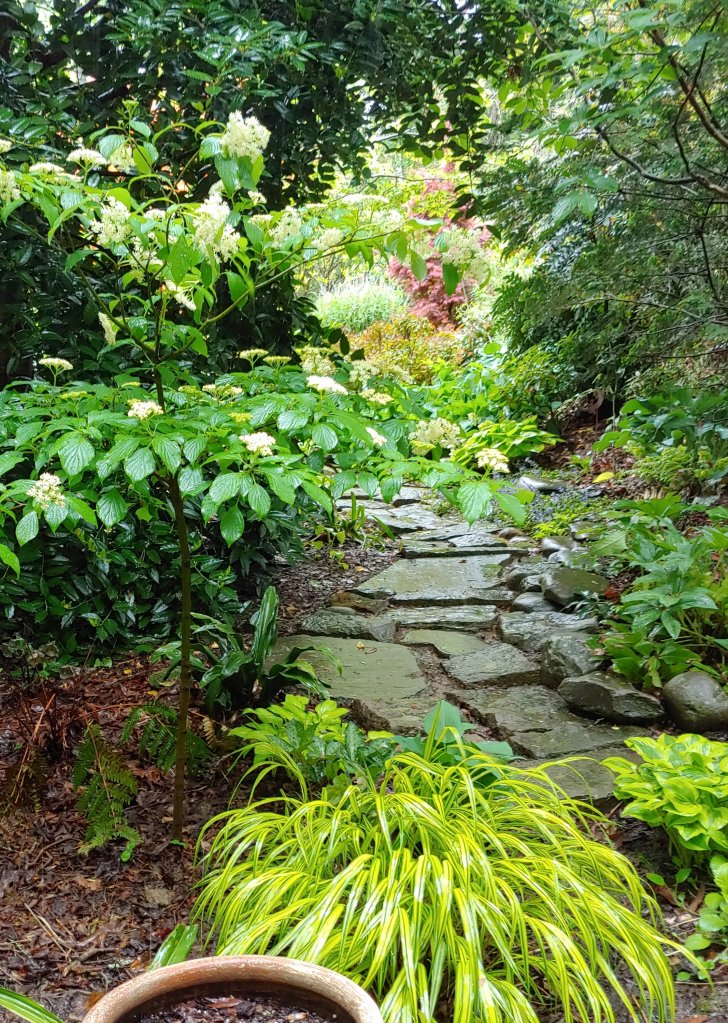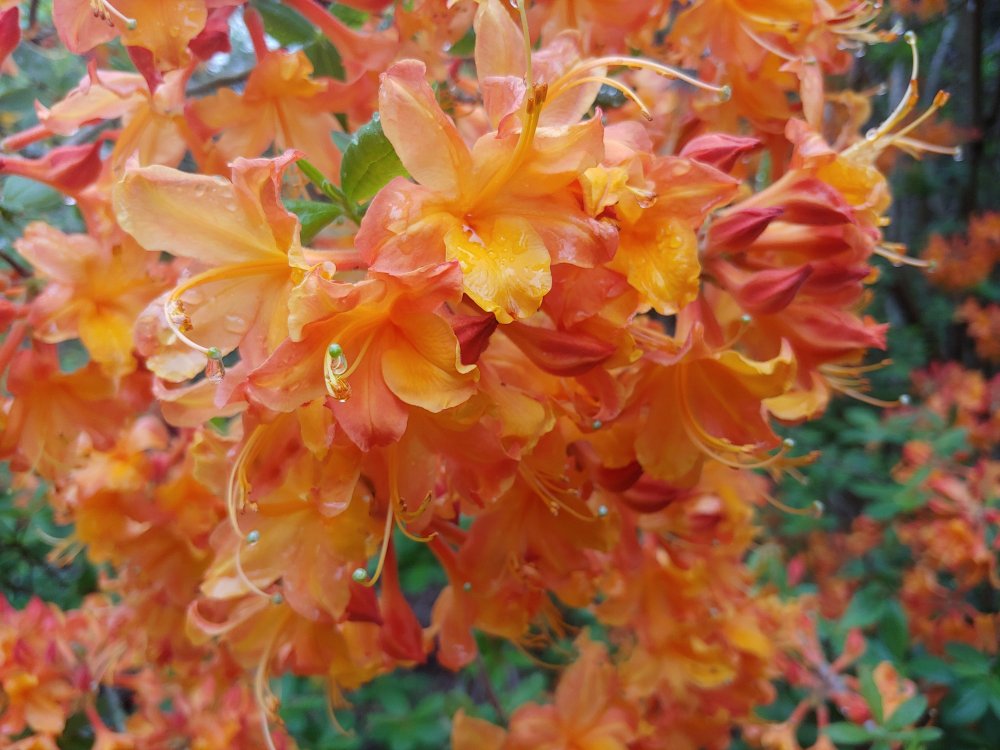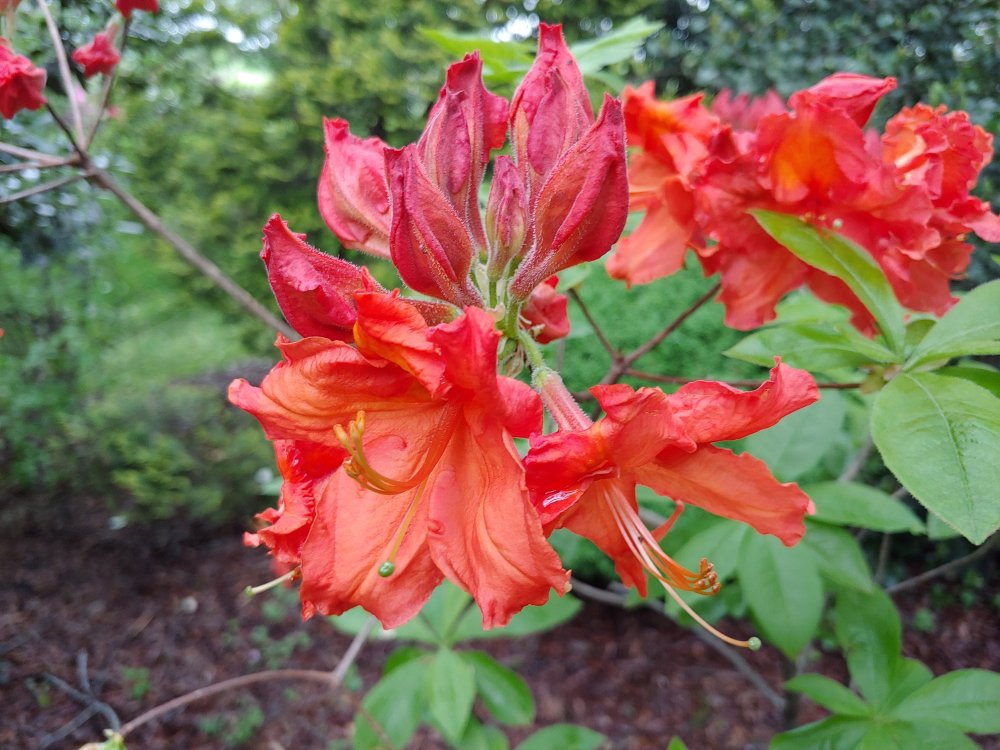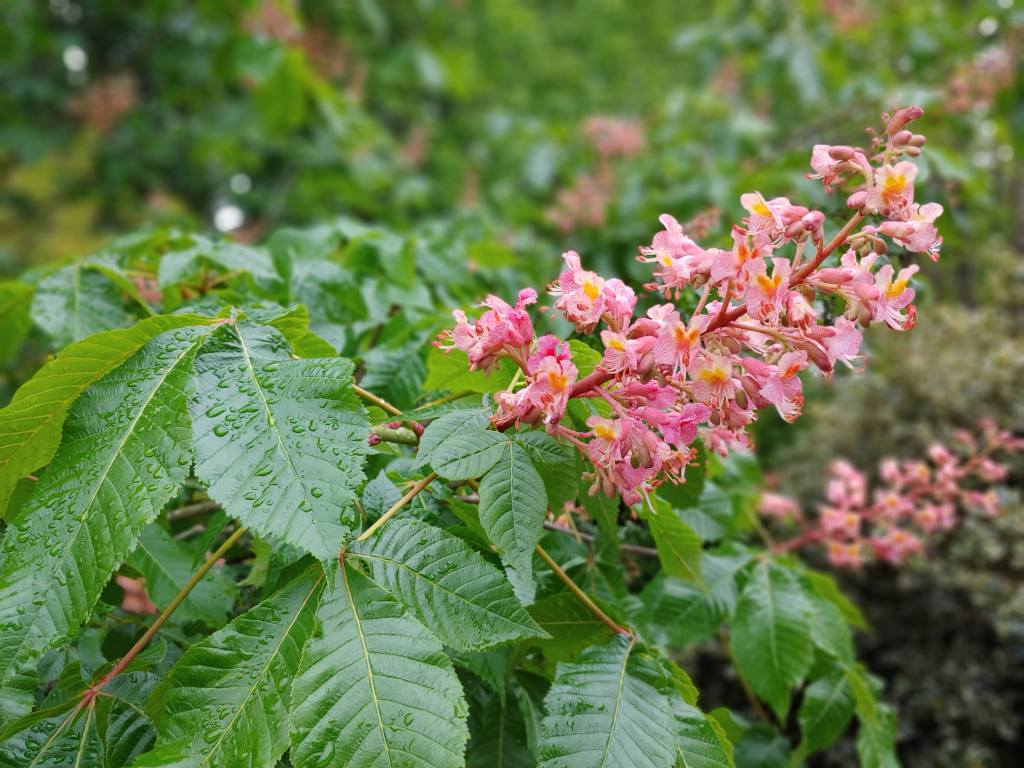Today is the reward for a long winter with few blooms. The garden starts slowly, with scattered flowers through the winter months that increase in March, and then April, but the garden is incomplete until trees and shrubs come into leaf and hostas fill the open spaces. Beginning the second week of May a few trees are just beginning to come into leaf, but the garden is looking full again. Around every corner there is something to marvel at.

Small areas of the garden where large evergreens were lost in recent years have seemed bare, but small plants are beginning to fill as expected. Some will required additional years before filling satisfactorily, but I am most pleased by the addition a year ago of two Pagoda dogwoods (Cornus alternifolia, above), one that will fill the understory left open when a cypress faded in increasing shade.

The fragrant and colorful Exbury azaleas (above and below) are beginning to flower along the northern border. Ones in the shadier side garden lag behind, but all will soon be flowering. I have not noticed the scent yet. With my sadly lacking sense of smell the azaleas are ones that break through, but regardless of scent they make a glorious display for several weeks in May.

Several more recently planted native, deciduous azaleas along the northern border are later to flower, and while fragrant the white and pink blooms are not as showy as Exbury azaleas that also seem faster growing. This combination of azaleas is already a favorite in the garden, and as the natives fill the space in a few years I am certain to spend many hours enjoying the blooms. Unfortunately, I have not left space for a bench.

The red buckeye (Aesculus pavia, above) is more an upright shrub than tree, but it flowers dependably for several weeks in the shade of maples and the bigleaf magnolia (Magnolia marcrophylla) in the side garden. This spring, flowering has extended to overlap with the red horse chestnut (Aesculus x carnea, below) that fills an open space by the koi pond where a large Seven Son tree (Heptacodium miconiodes) was toppled in a summer storm. The horse chestnut will grow significantly larger than the Seven Son, and despite its slow growth it will soon outgrow the area, though with few consequences that a bit of selective pruning won’t solve.

Dave – do you know if native azalea varieties are deer-resistant? This year I finally got to see a few blooms on some locally-grown, but not native, azaleas that I planted 20+ years ago, thanks to heavy deer predation. But in my local wanderings I’ve seen some lovely wild/native azaleas in full bloom in areas where deer are definitely a heavy presence & wonder why these haven’t been munched to the ground.
I don’t spray the Exbury or native azaleas, but they are in ground with unsure footing. I suspect they are not deer resistant, but not favorites either. It is sometimes hard to judge what deer will eat. A few of the evergreen azaleas are chewed on if I stray a few days too long between spraying, while others are never touched. In the end I spray plants that have been chewed and not until I see evidence that deer go after them. So far, the deciduous azaleas are safe.